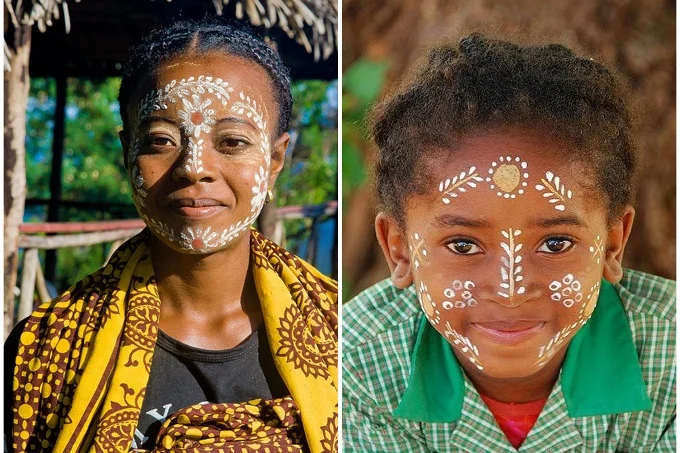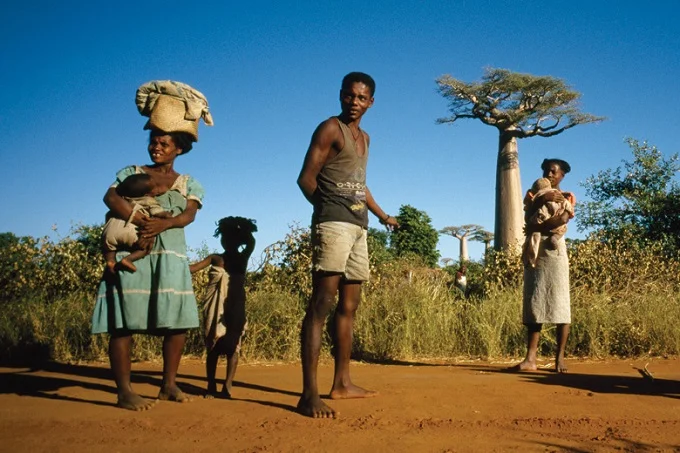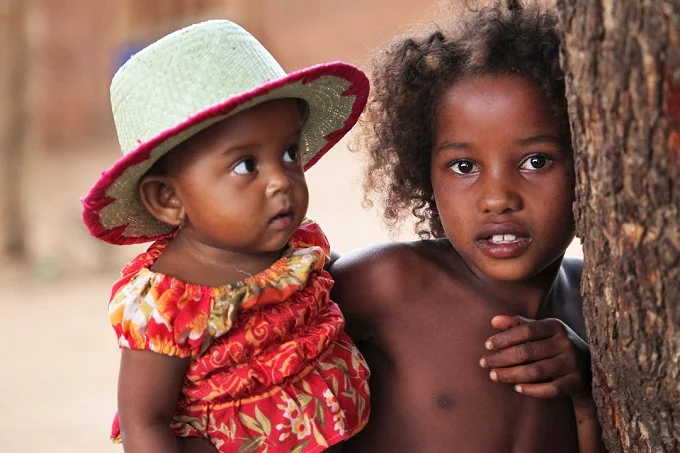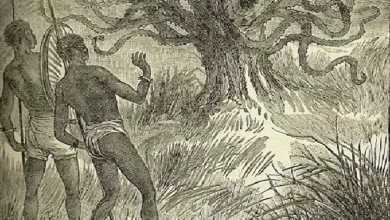The brief history of Madagascar people

Africa is like an exclamation point, with the dot being the island of Madagascar, larger than France, Belgium, Holland, and Luxembourg combined. Although geographers count the island as part of Africa, it differs sharply from the continent.
Madagascar’s flora and fauna are peculiar: Many species of plants and animals found on the island are endemic, that is, found only here. The island has no large mammals, predators, no monkeys, but widely distributed lemurs, there are boas, but no venomous snakes.
The bulk of the islanders – the Madagascans – differ sharply in race, language, and culture from the inhabitants of the African mainland. The nature of the flora, fauna, and, to some extent, the ethnic composition of the island indicate the isolation of Madagascar for many thousands of years from the other continents. At the same time, the Madagascans have a combination of African culture with the culture of the Indonesian population, and the influence of Indonesian elements is more noticeable.
Madagascar language is grammatically similar to the Javanese, Malay language, and other languages of Western Indonesia. In the vocabulary of the Madagascar language, words of Malay-Polynesian origin prevail, but there are borrowings from Sanskrit, Arabic, and various Bantu languages.
Linguistic studies suggest ancient cultural and trade links between Madagascar and India, as indicated by the Madagascar names of months and a number of deities of Sanskrit origin. However, many Sanskrit words present in the languages of Indonesia are absent in Madagascan. Thus, the early settlements of the Indonesians in Madagascar preceded the penetration of the Indian influence into Indonesia. This gives scholars hope to establish a relatively precise time of the Indonesian settlers’ arrival on the island.
The lively relations of the population of Madagascar with the inhabitants of the East African coast are indicated by the names of almost all domestic animals in the Madagascar language, borrowed from Swahili. The only alphabet the Madagascans adopted from the Arabs was their alphabet, adapting it to the phonetic peculiarities of their language. The most ancient manuscripts in Madagascar written in the Arabic alphabet are dated XVII century.
It is more difficult to determine the anthropological composition of the island’s indigenous population. It cannot be unequivocally called Malay in its present form, as several anthropological types can be distinguished among the Madagascans – Mongoloid in general. Thus, the Negro-African and Negro-Oceanian admixture is found in different proportions in almost all the inhabitants of Madagascar, but only on the western coast the Negro-African type prevails among the Madagascans.

Thus, the linguistic and anthropological data indicate that the ethnic elements involved in the formation of Madagascar’s population were numerous and diverse. As a result of mestization and the changes they underwent, these ethnic elements constituted the actual Madagascan people.
The material culture of the Madagascan had a South Asian origin (blacksmith’s bellows, brass rifle, boats with balancers, agricultural machinery, irrigation farming, rice cultivation, house construction, shape of gravestones, etc.). Consequently, the population of Madagascar, according to a number of features, belongs to the peoples of the Indonesian world. But can we consider the question of the origin of the Madagascans finally resolved? No, and here’s why.
It is known that the migration of the Malagasy from Indonesia to their new homeland, to the West, occurred in several waves and lasted for about two thousand years – from the 10th century BC to the 10th century AD. In fact, why did it happen, and what was the reason for the cessation of the resettlement? By what route did the settlers move across the Indian Ocean? What did they find in Madagascar? Was the island inhabited at the beginning of the 10th century AD? Did the ancestors of the Madagascar make up the first population of the island?
Let us begin with hypotheses and answers to the latter questions. According to A. S. Orlova and D. Drizo, by the 10th century BC. Madagascar was inhabited by natives of Africa – Negroes, about whom almost nothing is known. It is most natural to assume the proximity of the autochthonous population of Madagascar to the ancient population of East Africa (Ethiopian and Khoisan racial type). The later aliens were South Asian Mongoloids and then Bantu Negroes (due to the slave trade).
As a result of subsequent internal migrations, no ethnic group was able to maintain its integrity in Madagascar, although one or another of them may have imposed its more or less pronounced imprint on a particular area of the island. As the Madagascar scholar, R. Rabemanandzara writes, “the reasons for these movements were wars and struggles between rival tribes, or the search for new fertile lands, or simply expansion or economic reasons. These migrations were one of the most decisive factors determining the essence and peculiarity of Madagascar’s demographic complex and economy.”

The diversity of the island’s natural conditions has long determined the regional division of labor. The inhabitants of the humid tropical region on the eastern coast are engaged in farming (rice cultivation) and fishing, less – in cattle breeding. The inhabitants of the central plateaus, characterized by a temperate climate, are equally engaged in cattle-breeding and agriculture (rice, coffee, vanilla, pepper, and essential oil crops). Finally, the inhabitants of the arid plains of the west coast have cattle breeding as their main branch of economy, which is similar in the main features to that of Africa. In addition, goats, sheep, pigs, zebu are bred.
Farming on the island differs sharply from Africa by the predominance of rice culture and the irrigation system associated with it. The main tool of the Madagascans is a narrow and long shovel with a concave blade. They till the land with it, clear clogged channels, etc. Rice is harvested manually with special knives, and threshed with cattle which drive it over sheaves laid out on the threshing floor. Besides rice, potatoes, yams, beans, sugarcane, various vegetables, hemp, and tobacco are cultivated. Interestingly, the Malgashis usually chew tobacco rather than smoke it.
The mainstay of the Madagascar diet is rice, which is cooked in different ways and eaten with spicy sauces. Flour is not made of rice. A peculiarity of Madagascan cuisine is cooking without salt and using salt in a dish just before eating.
The closeness of the Madagascans to the South and South-East Asian culture is shown in the shape and design of dwellings, which differ from those of the neighboring East Africa. In many areas of the island, the constructions are rectangular, with walls of reeds, with a pointed gable roof of palm leaves.
Depending on natural conditions, the structures are placed on stilts, and different materials are chosen for the construction. Home furnishings are rich and varied. This carved furniture, beautiful reed mats that decorate the walls, cover the floor, and are used as tablecloths and napkins. This should also include intricately ornamented wooden and faience dishes, Calabasas, sculptural images.
The traditional clothing of the Madagascan was a loincloth for men and a skirt for women. One of the accessories of traditional dress, Lamba, is still preserved. It is a rectangular piece of cloth with a beautiful stripe pattern, which a person “drapes” with like a cloak. Nowadays, the costume of European cut is common.

It is difficult to reconstruct the historical past of Madagascar due to the scarcity of written sources. The earliest (by the XIV-XV centuries) class society and state were formed among the Merino people. Slightly later emerged the states of the Betsileu, Sakalava, and Betsimisaraka, absorbed by the end of the 18th century by the feudal power of Imerina. The power of the Imerina kings extended to the whole island. This created opportunities for the consolidation of the people, the core of which was the merina, the “brain and heart” of the emerging nation.
At the end of the 19th century, Madagascar came under French rule. The French colonizers used the social institutions that existed in Madagascar in their internal governance. The policy of artificial restoration of the former tribal unions headed by bribed “chiefs” was systematically carried out, in the center of the country, the neighborhood community – fokonolon was included in the system of colonial governance.
Under the influence of French capital, bourgeois relations began to take shape, and the national bourgeoisie and proletariat began to form. Since the beginning of the 20th century, the national liberation movement, which intensified after World War II, began to develop on the island. On June 26, 1960, Madagascar and a number of small adjacent islands off the southeast coast of Africa won their freedom.
The total population of the Democratic Republic of Madagascar is just over 8 million people. In addition to the Malagasy (98%), the island is home to the French (over 50,000), Indians (11,000), Chinese (8,000), Arabs, Comorians. Most of the population adheres to traditional beliefs and Christianity, Islam is not widespread.
To get the latest stories, install our app here.




